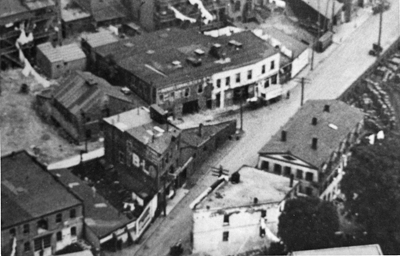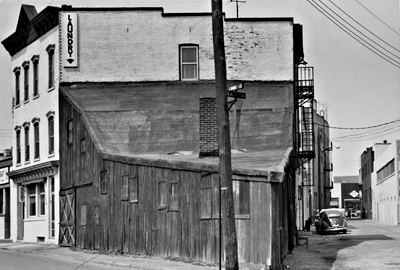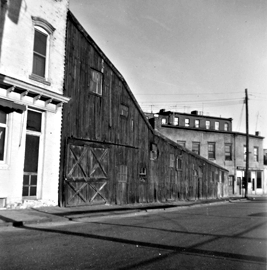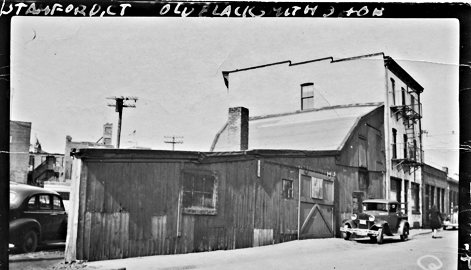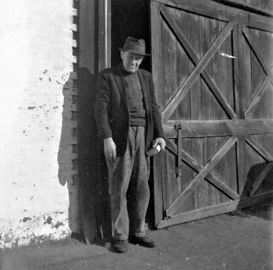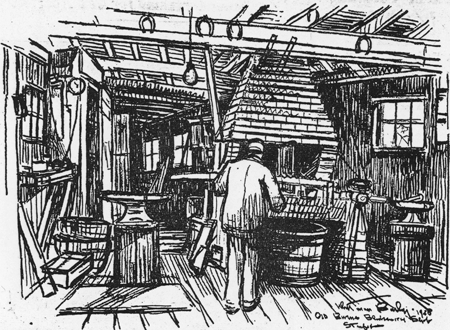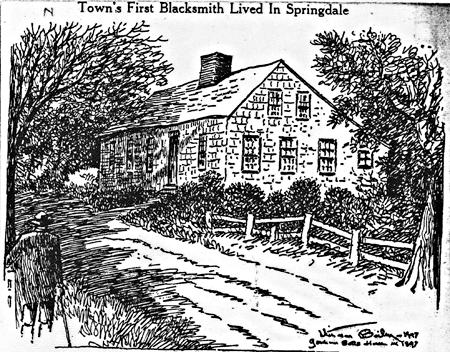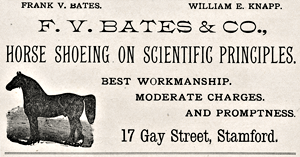| Join | Official Historian | City of Stamford | Blog | About Us | |
| Jewish Historical Society | Civil War Roundtable | Contact Us | |
|
|
|
|
Photo Archivist's Selection of the Month: February 2009
Blacksmiths in Stamford
In 1892 according to the city directory Stamford had thirteen blacksmiths. Some of the same names show up in our photo collection in later years, so they were obviously family businesses.
History of Stamford, Connecticut, from its settlement in 1641, to the present time by E.B. Huntington, has a list of businesses as of 1868 although it includes Darien which was then part of Stamford. The largest number of photos we have are of James Burnes, the son of the above-mentioned Jas. Burns, whose business was at the corner of Stage and Canal Streets. Jas. Burnes is listed as living on Richmond Hill. The text below is from the back of the 1965 photo of Mr. Burns:
The text below is taken from one of Carl Lobozza's picture books for the society, "Pictures from the Past," 1970, Page 60, describing the photo at right: "Horse power was not a cheap means of transportation. Horses required daily care, were regularly shod and still had to be fed when idle. There were many blacksmith shops in Stamford whose primary business was the shoeing of horses. The Burnes blacksmith shop which stood until recently at Stage and Canal Streets was a good example of the general interior appearance of that type of establishment. The metal was heated at the forge, and hammered into a desired shape at the anvil, then cooled in the water barrel which shows at left of center." One photo has the caption, "last standing local blacksmith shop as of 1967." The aerial view below show the corner of Canal and Stage streets. All of this was demolished in the urban renewal of the late 1960s and replaced by the Stamford Town Center (map).
And Whitman Bailey chimed in too: "Interesting View of Burnes Blacksmith Shop."
We add the usual warning: "At times, the accompanying vignettes are mostly folklore passed on to Mr. Bailey by residents of the areas where he was sketching. In those instances he had no way of determining the truth of the story. Nor have we. It is presented as a sidelight to the sketch. Therefore, researchers are cautioned to regard these tales as local color, interesting, thought provoking, but sometimes not entirely factual." Another blacksmith on Canal Street was Arthur G. Jessup, 56 Canal. Whitman Bailey also tells us (usual warning, see above) that "The Town's First Blacksmith Lived in Springdale." The ad below shows that by 1892 there was an V.F. Bates & Co. downtown, on 17 Gay Street.
Images © Stamford Historical Society Other downtown blacksmith shops Other Photo Archivist Selections of the Month |
|||||||||
|
|
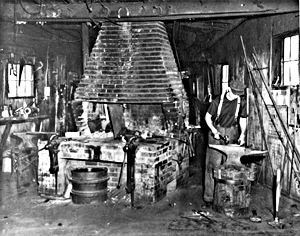
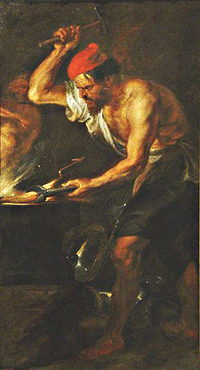
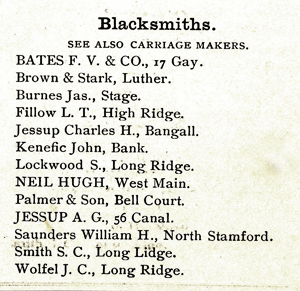
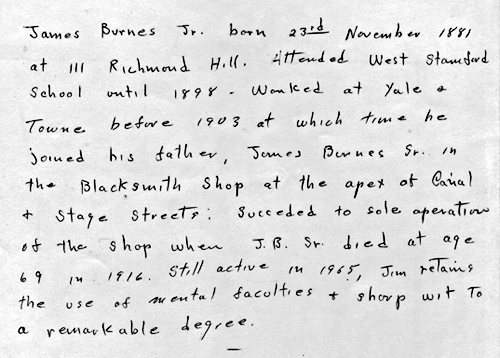
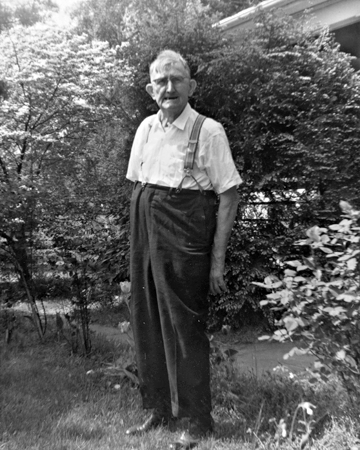
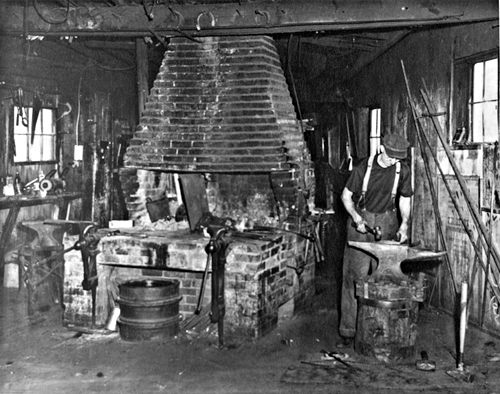 James Burnes' forge, ca. 1930.
James Burnes' forge, ca. 1930. 